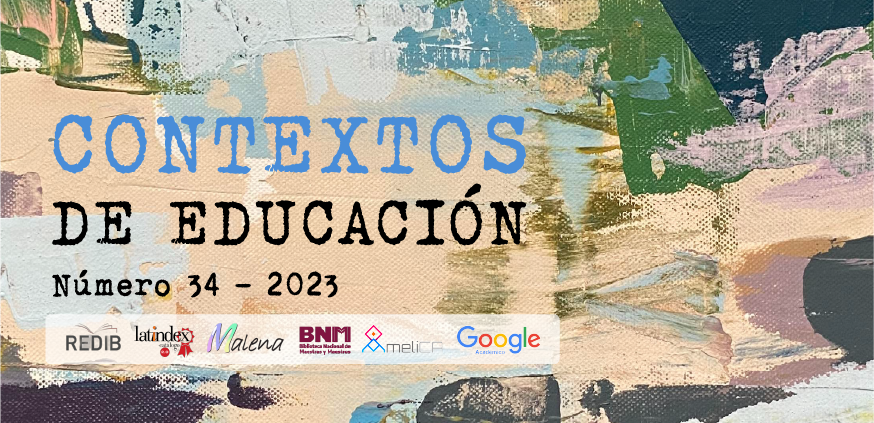INTERCULTURALITY IN THE ENGLISH LANGUAGE EDUCATION SYLLABI
Abstract
In the last few years there have been significant changes in the conception of English as a Foreign Language (EFL) and its teaching and learning processes, which, among others, highlight the inclusion of interculturality as the main thrust in such processes as well as the notion of the educational institution as a training space that fosters the inclusion of diverse cultures, acknowledging their linguistic, socio-cultural and historical diversity. This change of paradigm reveals the immediate need to look into higher education institutions that train future EFL teachers in search of the intercultural perspective. At this stage the main objective of the study arises with the purpose of analyzing the presence of the intercultural perspective in the syllabi of courses belonging to the specific and professional practice fields in the English Language Education program at the Instituto de Formación Docente Continua San Luis (IFDC-SL), in which the intercultural perspective is included in the curricula as a cross-curricular axis. The study, framed within a qualitative perspective, applied qualitative content analysis as the main data analysis tool. The results suggest some degree of inconsistency in the syllabi analyzed in terms of the explicit inclusion of the intercultural approach, fostering the revision and reconfiguration of the articulation between such syllabi and the curricula.
References
Consejo Federal de Educación (noviembre 7, 2007). Resolución CFE N° 24/07. Por la cual se aprueba los lineamientos curriculares nacionales para la formación docente inicial y primaria y la nómina de títulos.
Consejo Federal de Educación (diciembre 16, 2008). Resolución CFE N° 74/08. Por la cual se aprueba el documento sobre titulaciones para las carreras de formación docente - junto con denominaciones de títulos – se modifica documento lineamientos curriculares nacionales para la formación docente inicial - aprobados por resolución CFE 24-07.
Consejo Federal de Educación. (2012). Núcleos de Aprendizaje Prioritarios. Educación Primaria y Secundaria. Lenguas Extranjeras. Buenos Aires, Argentina.
Dang, T. & Seals, C. (2016). An Evaluation of Primary English Textbooks in Vietnam: A Sociolinguistic Perspective. TESOL Journal 9 (1), 93–113.
Garófalo, S. M. (2018). Los Desafíos Del Plurilingüismo Y La Interculturalidad En La Universidad Nacional De Quilmes. En S. Delayel (comp.). Las lenguas en la Universidad: desafíos en tiempos de plurilingüismo, interculturalidad e intertextualidad. Comunicaciones de las II Jornadas Lengua, Cultura e Identidad (pp. 18-27).
Bernal, Argentina: Universidad Nacional de Quilmes.
Gebauer, V. (2015). Análisis del componente cultural en métodos de enseñanza del español lengua extranjera producidos en Argentina. Tesis de Maestría, Facultad de Lenguas Universidad Nacional de Córdoba.
Hatoss, A. (2004). A Model for Evaluating Textbooks. Spring, 39 (2), 25-38.
Hidalgo Hernández, V. (2005). Cultura, multiculturalidad, interculturalidad y transculturalidad: evolución de un término. Universitas Tarraconensis: Revista de ciències de l'educació, 75-85.
Rivers, J. (2010). An introduction to the concept of intercultural communicative language teaching and learning: A summary for teachers. Ministerio de Educación de Nueva Zelanda.
Secretaría de Políticas Universitarias (2011). Proyecto de mejora para la formación inicial de profesores para el nivel secundario. Área Lenguas Extranjeras. Buenos Aires: Ministerio de Educación de la Nación.
Shin, J., Eslami, Z. R. & Chen, W.-C. (2011). Presentation of local and international culture in current international English-language teaching textbooks. Language, Culture and Curriculum, 24 (3), 253-268.
Souza Minayo, M. (2004). Investigación social. Teoría, método y creatividad. Buenos Aires, Argentina: Lugar Editorial.
Vasilachis de Gialdino, I. (1992). Métodos cualitativos I. Los problemas teórico-epistemológicos. Buenos Aires, Argentina: Centro Editor de América Latina.
Vasilachis de Gialdino, I. (Coord.) (2006). Estrategias de investigación cualitativa. Barcelona: Gedisa. Recuperado dehttp://www.bibliotheque.auf.org/doc_num.php?explnum_id=819
Vez, J.M. (2001). Formación en Didáctica de las Lenguas Extranjeras. Rosario, Argentina: Homo Sapiens Ediciones.
Downloads
Published
Issue
Section
License
Política propuesta para revistas que ofrecen acceso abierto
Aquellos autores/as que tengan publicaciones con esta revista, aceptan los términos siguientes:- Los autores/as conservarán sus derechos de autor y garantizarán a la revista el derecho de primera publicación de su obra, el cuál estará simultáneamente sujeto a la Licencia de reconocimiento de Creative Commons CC BY-NC-SA 2.5 AR que permite a terceros compartir la obra siempre que se indique su autor y su primera publicación esta revista.
- Los autores/as podrán adoptar otros acuerdos de licencia no exclusiva de distribución de la versión de la obra publicada (p. ej.: depositarla en un archivo telemático institucional o publicarla en un volumen monográfico) siempre que se indique la publicación inicial en esta revista.
- Se permite y recomienda a los autores/as difundir su obra a través de Internet (p. ej.: en archivos telemáticos institucionales o en su página web) antes y durante el proceso de envío, lo cual puede producir intercambios interesantes y aumentar las citas de la obra publicada. (Véase El efecto del acceso abierto).

